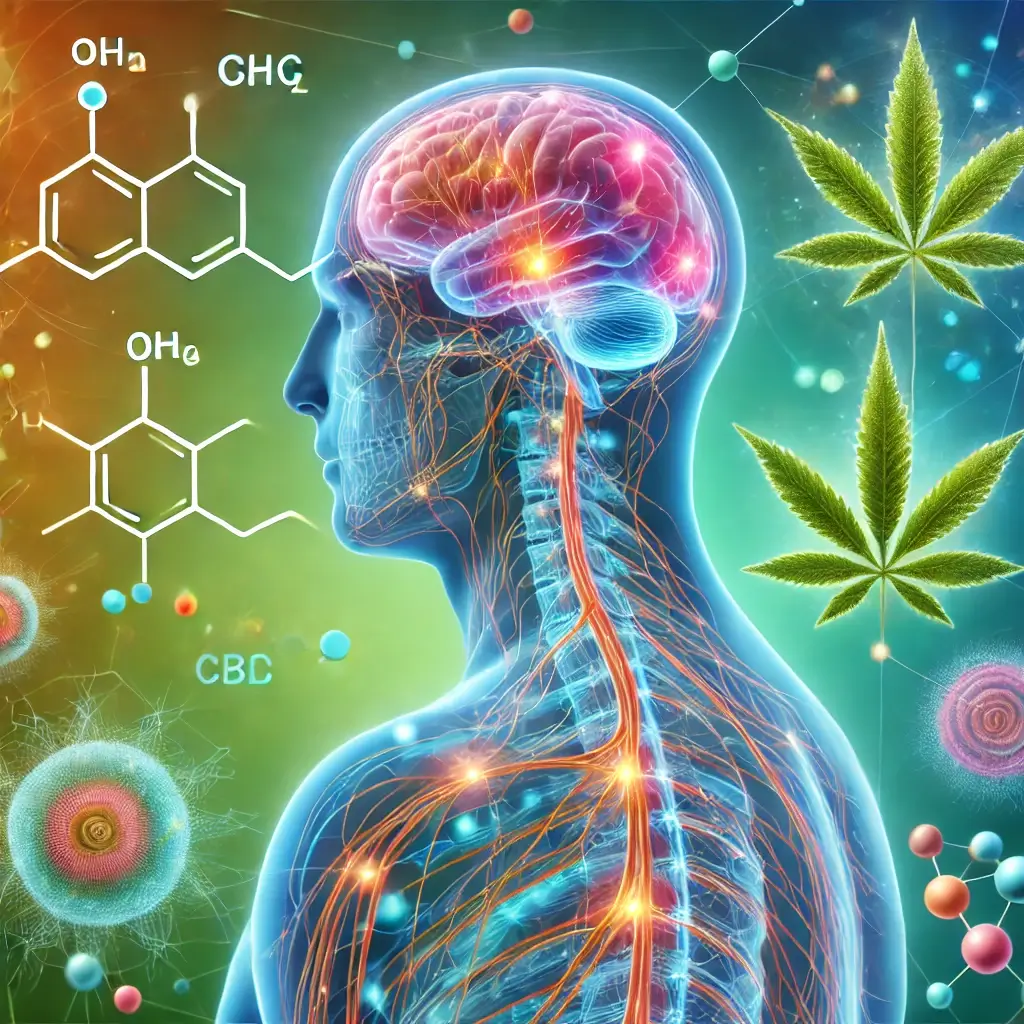The Global Challenge of Pain Management
Pain, whether acute or chronic, remains a global health challenge, affecting millions of individuals and significantly impacting their quality of life. According to the CDC, approximately 50 million adults in the United States suffer from chronic pain, making it one of the leading causes of disability. Conventional treatment methods, including opioids, NSAIDs, and physical therapy, are often used to manage pain. However, these treatments come with their own set of limitations. Opioids, for instance, have sparked an addiction epidemic in the U.S., while NSAIDs can lead to gastrointestinal and cardiovascular issues with prolonged use.
Cannabis as a Promising Alternative Treatment
In this context, cannabis has emerged as a promising alternative, gaining attention from both medical professionals and researchers. Unlike traditional analgesics, cannabis operates through the endocannabinoid system (ECS), a complex network of receptors and enzymes regulating various physiological processes, including pain and inflammation. Cannabinoids like THC (tetrahydrocannabinol) and CBD (cannabidiol) interact with ECS receptors, offering pain relief through distinct central and peripheral pathways.
Research Progress and Clinical Applications
Legalization in numerous countries has further catalyzed research, unlocking insights into the mechanisms by which cannabis alleviates pain. Neuroscientific studies have highlighted its efficacy in treating conditions such as neuropathic pain, arthritis, and fibromyalgia. Clinical trials are refining cannabis-based treatments, aiming for tailored dosing strategies and delivery methods to maximize therapeutic potential while minimizing adverse effects.
Understanding Central Mechanisms
CB1 Receptor Modulation: THC binds to CB1 receptors in the brain, significantly reducing nociceptive signals. This modulation helps diminish pain perception directly at its source. A 2023 study in Neurology Research emphasized this central effect, showcasing THC’s ability to reduce pain intensity in chronic conditions. Activation of Descending Pain Pathways: Cannabis stimulates descending inhibitory pathways, which help suppress pain signals as they travel to the brain. Thalamic and Cortical Processing Alteration: Cannabis affects the thalamus and cortex, regions responsible for processing pain signals and their emotional impact. This dual modulation not only relieves physical pain but also reduces associated psychological distress.
Peripheral Mechanisms and Pain Management
CB2 Receptor Activation: CBD interacts with CB2 receptors, modulating immune responses and reducing inflammation. This mechanism is particularly effective in conditions like arthritis. Nociceptor Desensitization: Cannabinoids reduce sensitivity in nociceptors, the nerves responsible for detecting harmful stimuli like heat or injury. Inflammatory Mediator Reduction: Cannabis lowers levels of pro-inflammatory cytokines and prostaglandins, offering relief from inflammation-induced pain.
Advanced Receptor-Level Interactions
TRPV1 Channel Modulation: These channels, which respond to heat and chemical irritants, are desensitized by cannabinoids, mitigating inflammatory pain. GPR55 Receptor Inhibition: Emerging evidence suggests cannabis can modulate this receptor, linked to pain regulation. Adenosine Signaling Enhancement: By enhancing adenosine activity, cannabinoids exert anti-inflammatory and analgesic effects.
Clinical Applications and Treatment Methods
Cannabis’s broad-ranging mechanisms translate into its effectiveness for various pain-related conditions: Neuropathic Pain: Studies reveal that cannabis is effective in treating nerve pain caused by conditions like multiple sclerosis and chemotherapy. Inflammatory Pain: CBD-rich formulations have been shown to alleviate arthritis pain without inducing psychoactive effects, providing a safer alternative for long-term management. Central Sensitization Disorders: Patients with fibromyalgia have reported significant symptom relief, likely due to cannabis’s modulation of central pain pathways.
Diverse Delivery Methods and Ongoing Research
The versatility of cannabis extends to its modes of administration: Sublingual Tinctures: Provide rapid absorption and targeted relief. Vaporization: Allows for immediate effects, ideal for acute pain flare-ups. Topical Applications: Useful for localized pain, such as joint inflammation in arthritis. Clinical trials are ongoing to refine these approaches, focusing on optimal dosing and patient-specific protocols. Recent findings suggest that combination therapies, incorporating both THC and CBD, may offer synergistic benefits for pain relief.
Future Implications and Medical Integration
Cannabis stands out as a revolutionary option in the realm of pain management, addressing both central and peripheral mechanisms of pain. Studies like those in Neurology Research and Clinical Neuroscience provide a solid foundation for its efficacy, while ongoing research continues to explore its full potential. As the medical community seeks safer, more effective alternatives to traditional painkillers, cannabis offers hope for patients worldwide. However, its integration into clinical practice requires a cautious approach, with an emphasis on evidence-based protocols and individualized treatment plans. By bridging the gap between science and clinical application, cannabis can redefine pain management for a broad spectrum of conditions, paving the way for a future where pain relief is both effective and safe.
Research References
Journal of Pain Science (2023): Insights into ECS and pain pathways.
Neurology Research (2023): Central effects of cannabis on pain perception.
Clinical Neuroscience (2022): Peripheral mechanisms in cannabis-based therapies.




